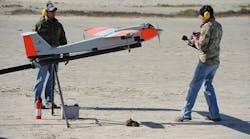In a much-publicized move, Congress has mandated that unmanned aircraft systems (UASs) be integrated into the national airspace by 2015. Yet much research remains to be done to make that integration as safe as possible. To find the best methods for UASs to sense other aircraft and take measures to avoid collisions, the Federal Aviation Administration (FAA) has named Texas A&M University-Corpus Christi an official test site.
Texas’ environment provides varied terrain and good flying weather year-round. It also offers the potential for overwater testing above the Gulf of Mexico. To manage the 11 test ranges comprising the test site, the university’s Lone Star UAS Center (LSUASC) has opened the UAS Command and Control Center at the Coastal Bend Business Innovation Center.
For roughly two years, the university’s Lone Star UAS Center (LSUASC) has been researching ways that UASs can be used for everything from mapping sea grass to detecting oil spills, monitoring hurricanes, and counting cattle for ranchers. The research center is affiliated with the Texas A&M Engineering Experiment Station (TEES) of the Texas A&M System Board of Regents. Researchers also will work in conjunction with Camber, a developer of unmanned technology, and experts at both the University of Texas at Arlington Research Institute and the Southwest Research Institute (SWRI) in San Antonio.
The proposal, backed by Texas Governor Rick Perry, was the only one from Texas being considered by the FAA. It is expected to have major financial implications for the state. The Association of Unmanned Vehicles International projects that once airspace is opened, the impact would be $8 billion statewide and $260 million in South Texas over the next 10 years. Such growth would create about 1200 jobs.
